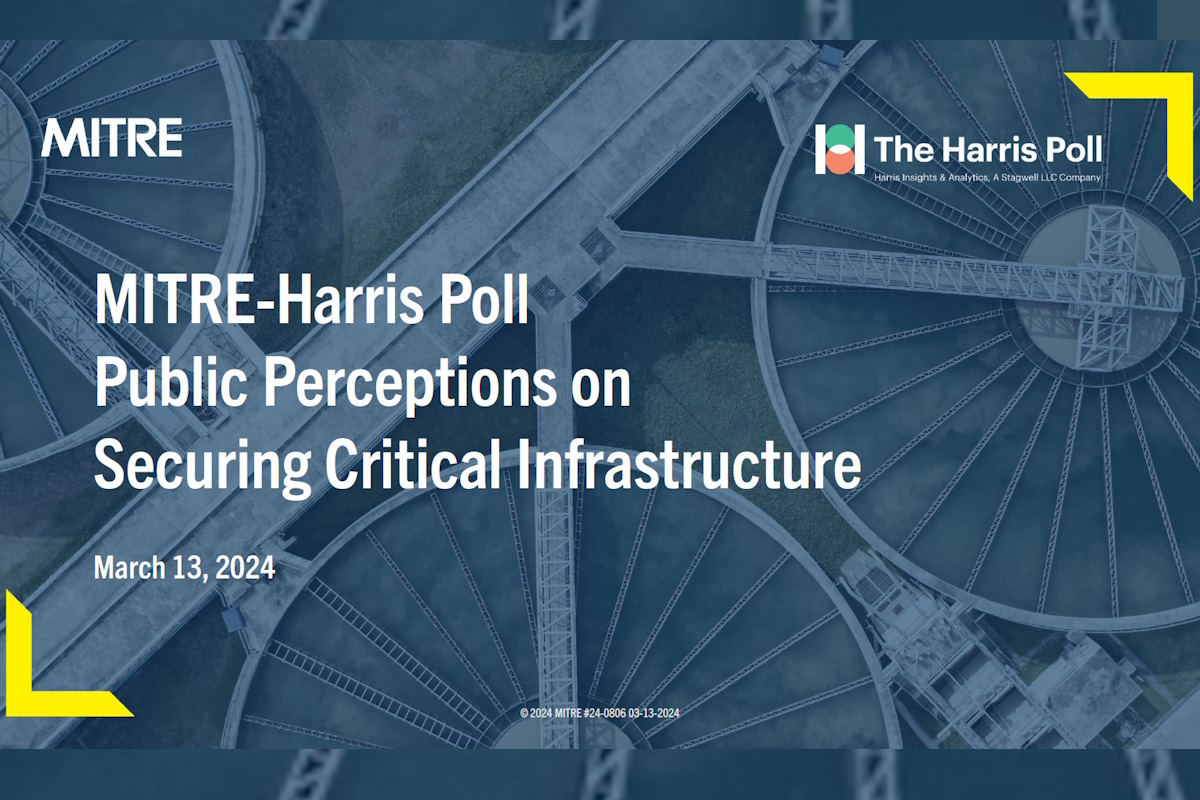MITRE-Harris poll reveals US public’s concerns over critical infrastructure and perceived risks

A MITRE-Harris poll revealed that a significant portion of the U.S. population, especially homeowners, urban residents, and individuals over the age of 27, have notable concerns regarding the nation’s critical infrastructure. The survey highlights cyberattacks, terrorism, and the aging or failing infrastructure as the most prominent risks. Notably, there is a split in public opinion regarding the confidence in the country’s capability to recover in the event of an attack on its critical infrastructure.
The poll was conducted online February 13-15, this year, among 2,046 U.S. adults (ages 18 and over) by The Harris Poll through its Harris On Demand omnibus product on behalf of MITRE. For the survey, MITRE and The Harris Poll described critical infrastructure as ‘the systems, facilities, and services that are vital for the functioning of our society and economy such as energy, water, transportation, communications, healthcare, and financial systems.’
Published Wednesday, the MITRE-Harris poll determined that with temporary failures of critical infrastructure on the rise in recent years, eight in ten U.S. residents are worried about how secure the nation’s critical infrastructure may be.
The U.S. public, in choosing their top 3 sections of critical infrastructure that would most impact their daily life if they were attacked, ranked them at 69 percent energy; 57 percent water and wastewater; 54 percent communications; 53 percent financial services; 44 percent healthcare; and 22 percent transportation.
“Threats to our nation’s critical infrastructure have heightened dramatically as the Chinese Communist Party and others have accelerated their capacity to conduct cyber attacks on our systems,” Charles Clancy, senior vice president and chief technology officer at MITRE, said in the report. “The MITRE-Harris Poll shows that the public is worried about these threats to the vital services we depend on every day, and MITRE is in a unique position to connect government and critical infrastructure providers to take steps now to secure them.”
The Cybersecurity and Infrastructure Security Agency (CISA) and other government agencies have been beating the drum to wake up critical infrastructure operators and Congress as to the potential threats on our energy, water, communications, and transportation systems, said Yosry Barsoum, vice president at MITRE and director for Center for Homeland Security. “CISA offers numerous resources to help operators prepare for attacks, but more support is needed to counter the increased frequency and sophistication of these threats. Our poll shows that the public deems these services crucial to our daily lives and national security.”
“Our adversaries want us to panic if, and when, they attack our critical infrastructure,” said Mark Bristow, director of Cyber Infrastructure Protection Innovation Center at MITRE. “Just as we prepare for storms and other natural disasters, we must take on a mindset to prepare for attacks on our critical infrastructure. While funding for fixing and fortifying our critical infrastructure is determined, we can all do our part by being resilient in the face of emergencies.”
“In this poll, Gen Z stands out based on substantially lower levels of concerns about security and safety of critical infrastructure vs. any other demographic group,” Rob Jekielek, managing director at The Harris Poll, said. “This insight is key reinforcement of Gen Z’s ambivalence to many cybersecurity issues. Although, and likely because, Gen Z are digital natives, they treat privacy and security threats much more lightly than other generations.”
“78% believe the federal government bears full or partial responsibility for fortifying our critical infrastructure,” the MITRE-Harris survey identified. “49% say it’s the responsibility of both public and private entities to fix and fortify our critical infrastructure, while 29% believe the federal government is solely responsible.”
When it comes to who’s responsible for fixing and fortifying the nation’s critical infrastructure, 78 percent believe the federal government bears full or partial responsibility for fortifying it. Forty-nine percent say it’s the responsibility of both public and private entities, particularly among older generations (55 percent for Gen X and 60 percent for Baby Boomers+) and suburban and rural residents (52 percent and 54 percent respectively). Twenty-nine percent believe the federal government is solely responsible, with 35 percent of urban residents holding this opinion.
When it comes to responsibility, the public believes that 9 percent put the responsibility on private industry; 12 percent put the responsibility on the state and local government; 29 percent put the responsibility on the federal government; and 49 percent put the responsibility on a combination of all three.
The survey also determined that the U.S. public considers cyberattacks, terrorism, and aging/failing infrastructure to be the greatest risks to critical infrastructure. “While 51% of the public are concerned that our critical infrastructure may not recover from an attack, those numbers rise with older generations (59% for Gen X and 56% for Baby Boomers+) and rural residents (59%),” it added.
Earlier this week, the U.S. Federal Budget for Fiscal Year 2025 was released, highlighting ongoing investments in cybersecurity programs aimed at safeguarding the nation from malicious cyber actors and campaigns. These investments focus on countering emerging cyber threats, strengthening federal cybersecurity measures, protecting federal cyberspace and critical infrastructure, and ensuring robust disaster resilience, response, and recovery mechanisms.










